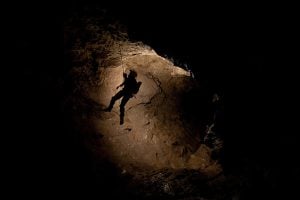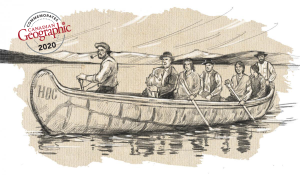
Exploration
Subterranean trailblazers
Caving: The ultimate underground sport
- 5055 words
- 21 minutes
This article is over 5 years old and may contain outdated information.
History

“On June 23, 1940, the St. Roch left Vancouver, British Columbia, beginning the historic voyage which was to make the 80-ton schooner the first ship to complete the elusive Northwest Passage from west to east.”
So wrote J. Lewis Robinson of Henry Larsen’s start to crossing the passage, the 75th anniversary of which is this year, in the February 1945 issue of Canadian Geographical Journal. In “Conquest of the Northwest Passage by R.C.M.P. Schooner St. Roch” (headline writers at the magazine played it pretty straight in 1945, as evidenced by the titles of other features in this issue, including “The Romance of Britain’s Abbeys” and “Ontario’s Summer Estates”), Robinson explained that Larsen was a seasoned RCMP officer who already had 14 years of Arctic experience aboard the St. Roch when he set out to transit the passage, which was merely meant to be a “side activity while successfully carrying on with their other police duties” and “keeping contact with our migratory Eskimo population.”
Larsen and his crew completed their voyage when they sailed into Halifax Harbour in October 1942, having bettered Roald Amundsen’s 1903-1906 east-to-west transit of the passage by 11 months.
Less than two years later, in July 1944, Larsen and crew set sail “for another history-making voyage,” noted Robinson, this time leaving Halifax to cross the Northwest Passage from east to west, with the goal of maintaining Canada’s Arctic sovereignty. The successful journey took just 86 days, making the St. Roch the first ship to complete the passage in a single year. “We were lucky and had the breaks,” Larsen told Robinson. “No one can predict ice or navigation conditions in the Arctic.”
Are you passionate about Canadian geography?
You can support Canadian Geographic in 3 ways:

Exploration
Caving: The ultimate underground sport

Exploration
A foremost Amundsen expert shares some highlights from famed Norwegian explorer’s 1903-06 expedition to the North Pole

History
A look back at the early years of the 350-year-old institution that once claimed a vast portion of the globe

People & Culture
Meet the first Canadian to navigate the treacherous Arctic sea route